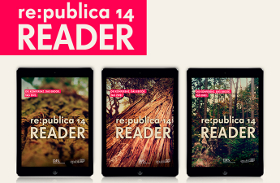Science & Technology
Mittwoch, 7. Mai 2014 - 10:30 bis 11:00
stage A
Beginner
Englisch
Vortrag
Kurzthese:
Scientific data, in the natural sciences but also in the humanities, is almost always related to space and thus its representation on maps in the Web is obvious and comes with several advantages. Especially open raw data, such as voluntereed geographic information or citizens’ observations can be used for further scientific studies and analysis. That's why maps are the perfect mean of communication from science to society and from society to science.
Beschreibung:
Since thousands of years, people have used maps to communicate and share information. Nowadays, digital maps and spatial information are ubiquituous and one of the major building blocks of current Web applications. Scientific data, in the natural sciences but also in the humanities, is almost always related to space and thus its representation on maps in the Web is obvious and comes with several advantages. It allows to efficiently communicate and combine spatially distributed information from very different domains such as spread of epidemies, distributions of species, or election results. Web mapping applications also allow users to analyze the spatial information and to contribute with additional content. OpenStreetMap is the best-known example for such volunteered geographic information. However, the potential for open science is not yet addressed sufficiently: Data collection is only one part of the scientific process from the research question to the dissemination of results.
Open data, such as voluntereed geographic information or citizens’ observations can be used for scientific studies and analysis. They may serve as raw data input for future research studies or applications. Additionally maps not only allow to present scientific results to the public, but also to raise questions and foster critical thinking. Thereby, maps also provide a mean to actively involve citizens in the analysis process by, for example, digitizing objects in remote sensing images or doing map-based analysis.
In this talk, we provide a critical overview on existing mapping applications in the context of open science and show how current challenges in open science may be addressed by map-based applications. We will illustrate these challenges with examples from citizen science and science communication projects where we are involved, i.e. the Triangle of Sustainability, the SenseBox project and the EnviroCar project.


